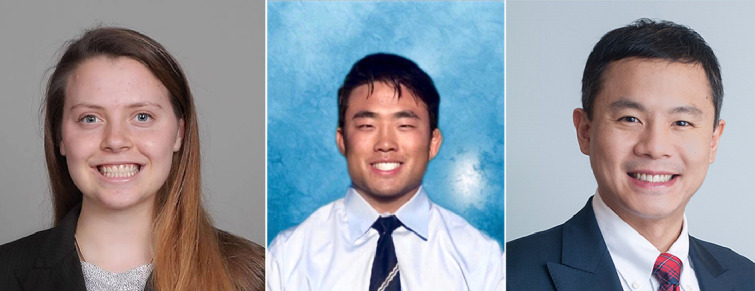
Alexandra Potter, Joshua Kim, Chi-Fu Jeffrey Yang MD
Alt-text: Unlabelled box
Central Message.
In this retrospective study by Scarci and colleagues, patients who developed symptomatic Covid-19 after lung resection had a very high postoperative mortality rate.
Alt-text: Unlabelled box
During the peak of the Coronavirus (Covid-19) pandemic, concerns regarding the feasibility and safety of thoracic surgery contributed to many thoracic operations being canceled or postponed each week globally.1 Since Covid-19 was first declared a public health emergency in March 2020, a small number of studies have evaluated postoperative outcomes in patients who develop Covid-19 following thoracic surgery. Studies have found that patients who develop Covid-19 after lung resection have postoperative mortality rates of up to 43%.2, 3, 4, 5 Additionally, studies have shown that many patients who undergo lung resection and then develop Covid-19 have critical or severe Covid-19.4 , 6 However, due to the limited amount of data, the impact of Covid-19 after thoracic surgery remains unclear.
In this issue of the Journal, Scarci and colleagues7 retrospectively evaluated postoperative outcomes in 107 patients who underwent lung resection from December 2019 to March 2020 at 4 thoracic surgery departments in the Lombardia region of Italy. During the postoperative period, 12 (11%) patients developed symptomatic Covid-19, and the median time from thoracic operation to the first Covid-19 symptoms was 48.1 days. Of these patients, six (50%) had critical Covid-19, two (17%) had severe Covid-19, and four (33%) had mild Covid-19. Six (50%) patients with Covid-19 died within 90 days after surgery, compared to one (1%) patient who did not have Covid-19 and died. Of note, in unadjusted analysis, patients who developed Covid-19 during the postoperative period had an increased risk of dying when compared to patients who did not develop Covid-19 (HR: 4.49, 95% CI: 2.71-5.82, P = <0.001). Additionally, body mass index, smoking history, and the number of lung segments resected were associated with an increased likelihood of Covid-19 onset.
The results of this study provide valuable insight into the experience of thoracic surgery patients during the initial Covid-19 outbreak in Italy. The authors’ efforts to study the impact of Covid-19 on postoperative outcomes after lung resection advance the understanding of the risks associated with thoracic surgery during the Covid-19 pandemic. Importantly, this study highlights the need for preventive strategies against Covid-19 transmission during the postoperative period, including symptom surveillance, isolation, regulated outpatient clinics, and if possible, vaccination. As the authors acknowledged in the paper, there were limitations to this study, largely due to the small sample size of patients who were Covid-19 positive. Additionally, variation in Covid-19 testing strategy (eg, patients may have been diagnosed with Covid-19 through postoperative swab or computed tomography findings) and incomplete follow-up of patients who underwent surgery in the final month of the study may have introduced bias into the results.
The findings of this study are a key contribution to the growing understanding of the impact of Covid-19 on patients who undergo thoracic surgery. In the present study, patients who developed Covid-19 after lung resection had a very high postoperative mortality rate. While the findings from this study are based on data obtained during the initial outbreak of the Covid-19 pandemic in Europe, they will continue to have important implications during recovery from the pandemic. Even though many patients are now vaccinated, there remain a large number of patients who are not vaccinated. The findings of the present study highlight the importance of preventing Covid-19 transmission during the postoperative period. As we recover from the Covid-19 pandemic, we must remain vigilant and continue to employ rigorous strategies to prevent Covid-19 transmission during the postoperative period, including social distancing and wearing masks whenever possible.
Footnotes
Conflicts of Interest: None.
REFERENCES
- 1.Collaborative C. Elective surgery cancellations due to the COVID-19 pandemic: global predictive modelling to inform surgical recovery plans. BJS (Br J Surg) 2020;107:1440–1449. doi: 10.1002/bjs.11746. [DOI] [PMC free article] [PubMed] [Google Scholar]
- 2.Peng S., Huang L., Zhao B., et al. Clinical course of coronavirus disease 2019 in 11 patients after thoracic surgery and challenges in diagnosis. The J Thoracic and Cardiovasc Surg. 2020;160:585–592. doi: 10.1016/j.jtcvs.2020.04.005. e2. [DOI] [PMC free article] [PubMed] [Google Scholar]
- 3.Huang J., Wang A., Kang G., et al. Clinical course of patients infected with severe acute respiratory syndrome coronavirus 2 soon after thoracoscopic lung surgery. The J Thoracic and Cardiovasc Surg. 2020;160:e91–e93. doi: 10.1016/j.jtcvs.2020.04.026. [DOI] [PMC free article] [PubMed] [Google Scholar]
- 4.Cai Y., Hao Z., Gao Y., et al. Coronavirus disease 2019 in the perioperative period of lung resection: a brief report from a single thoracic surgery department in Wuhan, People's Republic of China. J Thorac Oncol. 2020;15:1065–1072. doi: 10.1016/j.jtho.2020.04.003. [DOI] [PMC free article] [PubMed] [Google Scholar]
- 5.Hoyos Mejía L., Romero Román A., Gil Barturen M., et al. Thoracic surgery during the coronavirus disease 2019 (COVID-19) pandemic in Madrid, Spain: single-centre report. Eur jcardio-thoracic surg: off j Eur Assoc Cardio-thoracic Surg. 2020;58:991–996. doi: 10.1093/ejcts/ezaa324. [DOI] [PMC free article] [PubMed] [Google Scholar]
- 6.Li Y.K., Peng S., Li L.Q., et al. Clinical and transmission characteristics of Covid-19 - a retrospective study of 25 cases from a single thoracic surgery department. Curr Med Sci. 2020;40:295–300. doi: 10.1007/s11596-020-2176-2. [DOI] [PMC free article] [PubMed] [Google Scholar]
- 7.Scarci M, Raveglia F., Bortolotti L., et al. COVID-19 after lung resection in northern Italy. Semin Thorac Cardiovasc Surg. 2022;34:726–732. doi: 10.1053/j.semtcvs.2021.03.038. [DOI] [PMC free article] [PubMed] [Google Scholar]


